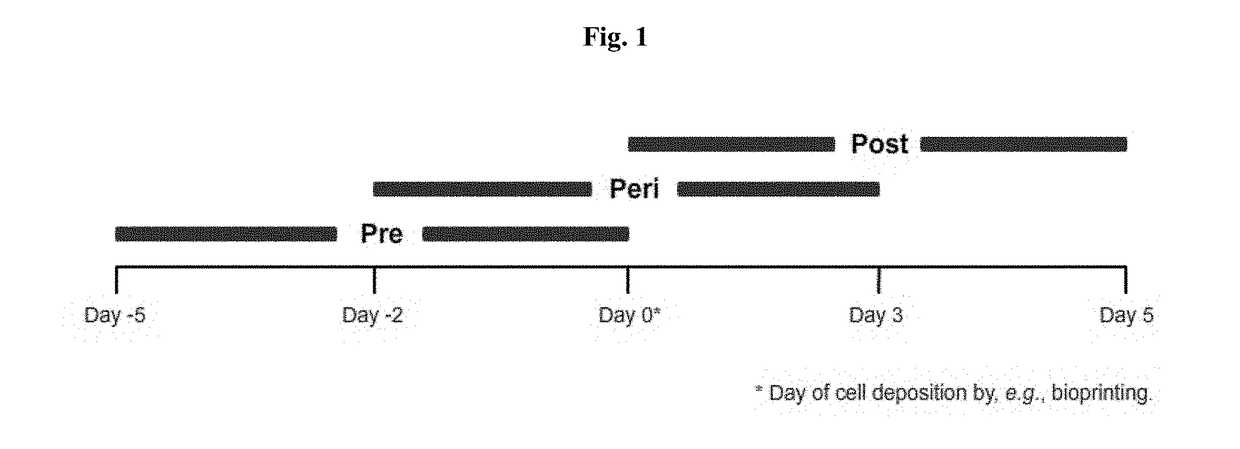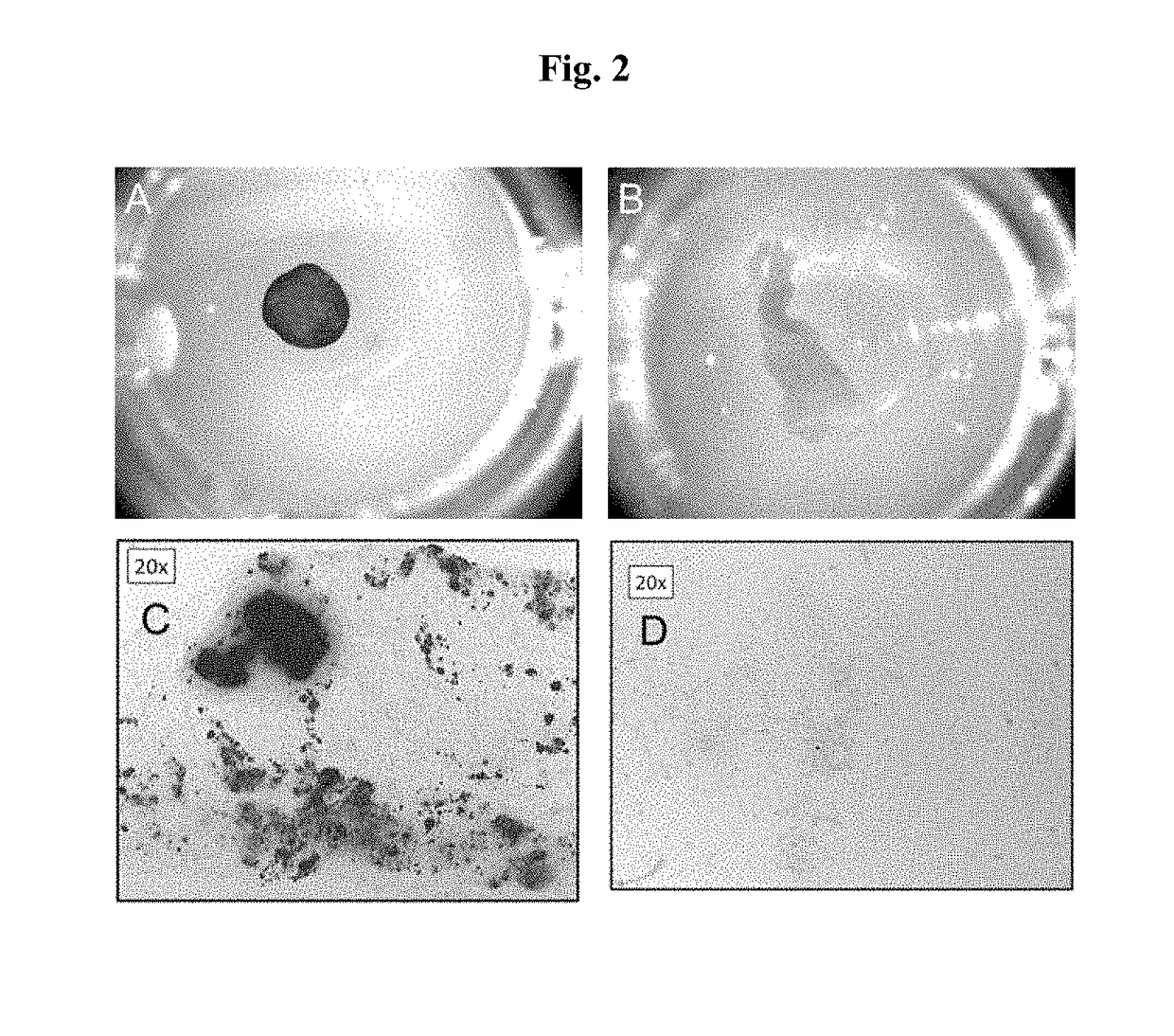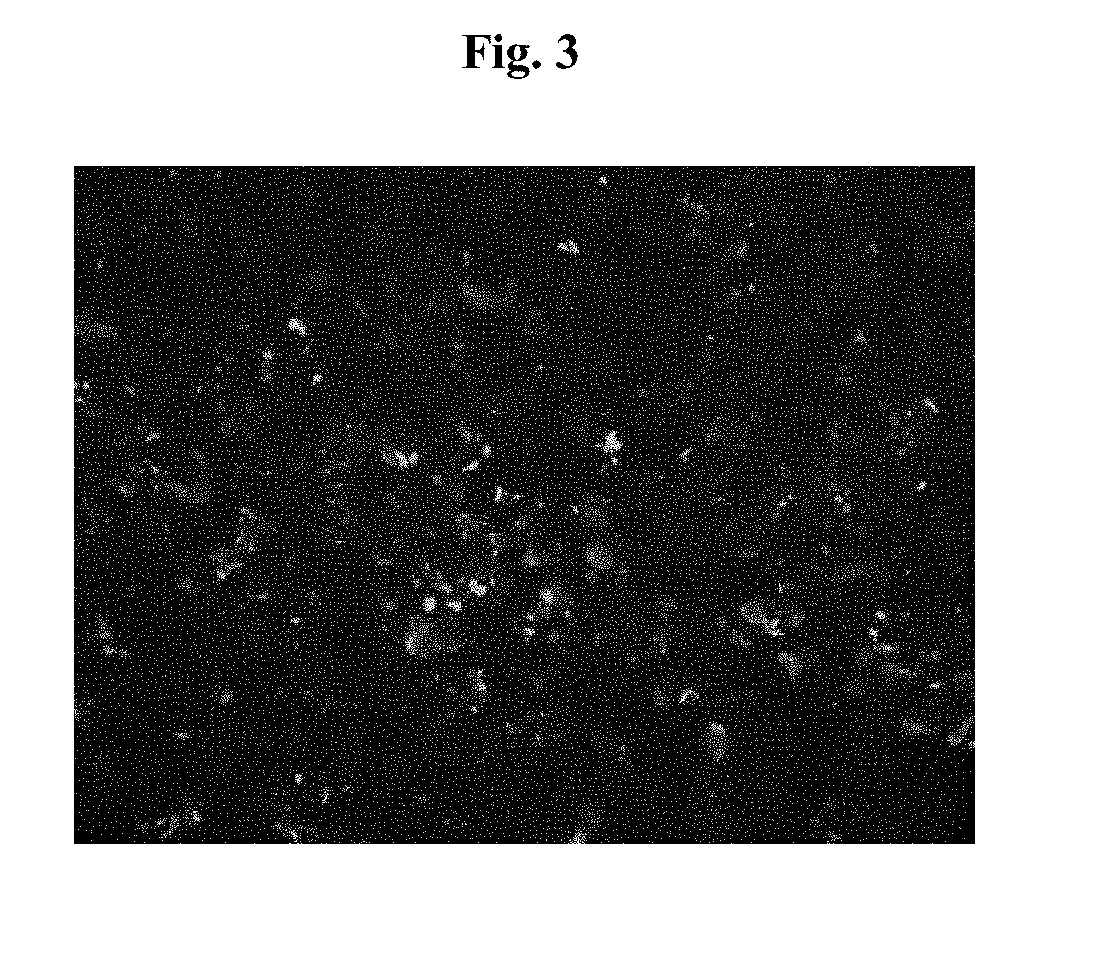Engineered Three-Dimensional Connective Tissue Constructs and Methods of Making the Same
a three-dimensional connective tissue and construct technology, applied in the health care industry, can solve the problems of low rate of new therapeutic discovery, long drug discovery process, and high cost of new drug discovery, and achieve the effect of improving the efficiency of the process, improving the safety of patients, and improving the quality of li
- Summary
- Abstract
- Description
- Claims
- Application Information
AI Technical Summary
Benefits of technology
Problems solved by technology
Method used
Image
Examples
example 1
MSC Culture
[0187]MSCs were cultured and expanded in standard cell culture conditions using a basal media that contained 5-10% (v:v) fetal bovine serum in low glucose DMEM supplemented with L-glutamine. In some cases, the MSCs were cultured in low (3-5%) oxygen conditions.
example 2
NovoGel™ Solutions and Mold
[0188]Preparation of 2% and 4% (w / v) NovoGel™ Solution
[0189]1 g or 2 g (for 2% or 4% respectively) of NovoGel™ (Organovo, San Diego, Calif.) was dissolved in 50 ml of Dulbecco's phosphate buffered saline (DPBS; Invitrogen Corp., Carlsbad, Calif.). Briefly, the DPBS and NovoGel™ are heated to 85° C. on a hot plate with constant stirring until the NovoGel™ dissolves completely. NovoGel™ solution is sterilized by steam sterilization at 125° C. for 25 minutes. The NovoGel™ solution remains in liquid phase as long as the temperature is maintained above 36.5° C. Below this temperature a phase transition occurs, the viscosity of the NovoGel™ solution increases and the NovoGel™ forms a solid gel.
[0190]Preparation of NovoGel™ Mold
[0191]A NovoGel™ mold was fabricated for the incubation of bio-ink (in the form of cellular cylinders) using a Teflon® mold that fit a 10 cm Petri dish. Briefly, the Teflon® mold was pre-sterilized using 70% ethanol solution and subjecting...
example 3
Fabrication of MSC-HAEC Bio-Ink
[0192]To prepare bio-ink (in the form of mixed cellular cylinders) MSC and HAEC were individually collected and then mixed at pre-determined ratios. Briefly, the culture medium was removed from confluent culture flasks and the cells were washed with DPBS (1 ml / 5 cm2 of growth area). Cells were detached from the surface of the culture flasks by incubation in the presence of trypsin (1 ml / 15 cm2 of growth area; Invitrogen Corp., Carlsbad, Calif.) for 10 minutes. MSC were detached using 0.15% trypsin while HAEC were detached using 0.1% trypsin. Following the incubation appropriate culture medium was added to the flasks (2× volume with respect to trypsin volume). The cell suspension was centrifuged at 200 g for 6 minutes followed by complete removal of supernatant solution. Cell pellets were resuspended in respective culture medium and counted using a hemocytometer. Appropriate volumes of MSC and HAEC were combined to yield a mixed cell suspension containi...
PUM
| Property | Measurement | Unit |
|---|---|---|
| time intervals | aaaaa | aaaaa |
| height | aaaaa | aaaaa |
| height | aaaaa | aaaaa |
Abstract
Description
Claims
Application Information
 Login to View More
Login to View More - R&D
- Intellectual Property
- Life Sciences
- Materials
- Tech Scout
- Unparalleled Data Quality
- Higher Quality Content
- 60% Fewer Hallucinations
Browse by: Latest US Patents, China's latest patents, Technical Efficacy Thesaurus, Application Domain, Technology Topic, Popular Technical Reports.
© 2025 PatSnap. All rights reserved.Legal|Privacy policy|Modern Slavery Act Transparency Statement|Sitemap|About US| Contact US: help@patsnap.com



